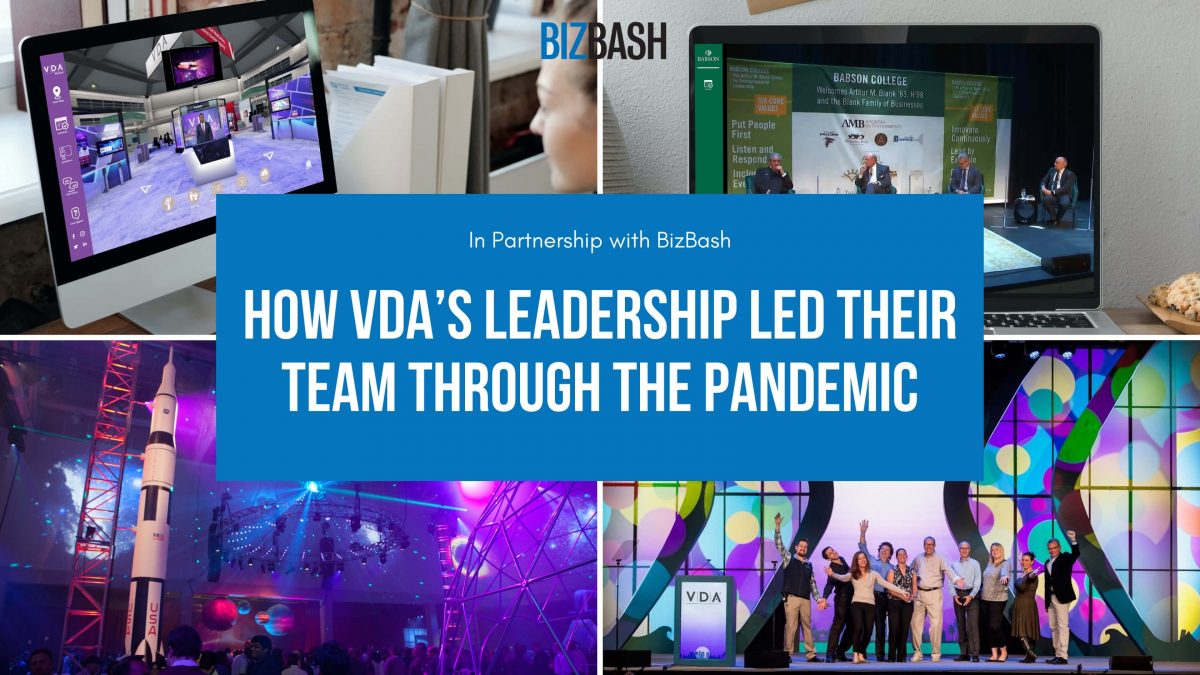
How Experiential Marketing Agency VDA’s Leadership Led Their Team Through the Pandemic
It’s no secret that the COVID-19 pandemic has had many negative impacts worldwide, sparing few businesses and industries. The event industry, especially, was brought to a brutal halt, forcing event professionals to pivot or risk being completely jobless.
One positive side effect though? The event industry as a united front supported and witnessed each other improvise, adapt and overcome. One such business that just might be coming out of the pandemic stronger than before is VDA, an experiential marketing, and event design firm based out of Massachusetts.
Focused on creating brand experiences that drive business growth through client collaboration and creative thinking, VDA’s tenacious team did exactly what they needed to in order to make it through these extremely tough times—which started with the leadership team recognizing that they had to devise new, innovative strategies for the agency’s clients that usually relied heavily on in-person experiences to interact with their audience. The result? VDA Virtual, a state-of-the-art 3D virtual event platform for online conferences, fundraising events, trade shows, and more. After all, the show must go on—even if it’s online.
Here, VDA’s executive director of strategy and creative Bob Russo and Director of Sales, Heather Munnell talk shop on the agency’s successful pivot project, as well as how the team banded together and not only survived but thrived in 2020.
How important was your team in your success over the last year and as you look to the future?
Bob:
Henry Ford has an amazing quote, “You can take my factories, burn up my buildings, but give me my people and I’ll build the business right back again.” This is VDA. Our team has been, is, and always will be critically important to our sustained success. Our senior leaders realized this from the very start of the epidemic, so they decided that we would not have any furloughs or layoffs and would keep the VDA family intact. We stand by “THIS IS VDA”. I’ve read a lot of content cataloging the tools and tactics businesses have used to transition to the online world, but the one thing that always stands out to me is how important people and teams are. People come first, and success follows from there.
Heather:
As many of our employees have been with the company for many years, it wasn’t outside of their wheelhouse to adapt to something new. It is kind of ingrained in their personalities, given that they are the veterans of VDA that are willing to push the envelope due to their extensive experience in the industry. They knew where events were before, and they needed to go, and used past history and knowledge to push forward. Since we didn’t let go of any employees, we are currently a step ahead of the game as a lot of companies are now looking for new employees to fill in the gaps. I think we’re poised for much better success moving into this virtual hybrid capacity without having to reinvent the wheel or rehire people to learn what we do.
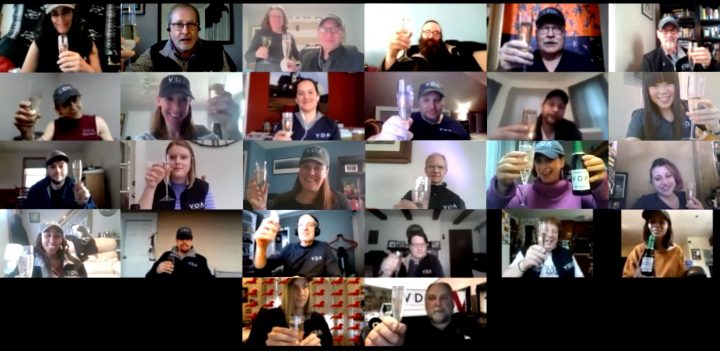
What competitive advantage did VDA have from the outset of COVID-19 that made the team primed for continued success despite the pandemic?
Bob:
There are two parts to this question – the first is that we are well varied in our service verticals. There is more to what we do as a company than just corporate meetings and trade shows. We design and build museum exhibitions, themed retail, and other experiential marketing activations. Thus, there is a broader work base for us to keep pulling from. Secondly, VDA has a team of fearless individuals who enable the company to do things it has never done before.
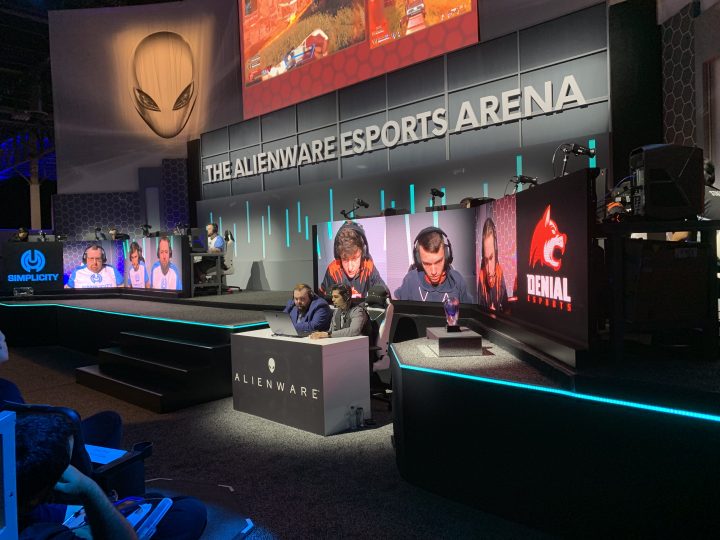
VDA designs and fabricates physical trade show booths for the world’s largest tech and gaming conferences.
Heather:
VDA’s legacy and culture revolve around finding creative solutions to any situation that may arise. We have an incredibly varied group of employees, with a wide range of skill sets and experience in the events vertical. As the industry was starting to make changes, we were able to adapt to them very quickly because we already had a lot of the knowledge and events expertise in-house. We were ready to move into this next juncture because we weren’t just relying on business with companies that were completely halted and had stopped business.
Did you notice a shift in your customer’s needs? Before or after COVID and how did your team at VDA respond to that?
Bob:
COVID nearly wiped out the need for physical events. We immediately reverted to a new strategy tailored to the new needs and circumstances in the industry, rather than jumping on the bandwagon. Our clients have expressed frustration related to Zoom and cookie-cutter virtual events and because they are familiar with VDA as a company that creates unique and customized experiences, they hoped to include the same elements in the digital space. As a result, VDA Virtual was born. Our team worked relentlessly to engineer an event solution that would enable brands to create and host tailored virtual and hybrid experiences. Keeping our entire team employed allowed us to have the resources we needed to go ahead and develop VDA Virtual, and, as Heather already mentioned, with very little outside help.
Heather:
Our customers’ needs didn’t really change. Brands were still looking for a way to increase brand exposure and engagement. They just needed to find a new creative avenue to make that happen. What changed was how we responded to our clients’ needs. Some of this was centered around finding ways to hold physical retail events while socially distancing and enhancing the scenery. In addition to that, we also needed to consider the demand for customized virtual experiences. As a result, our existing fabrication teams continued to work on physical activations, while our digital services accommodated the customer needs for online events.
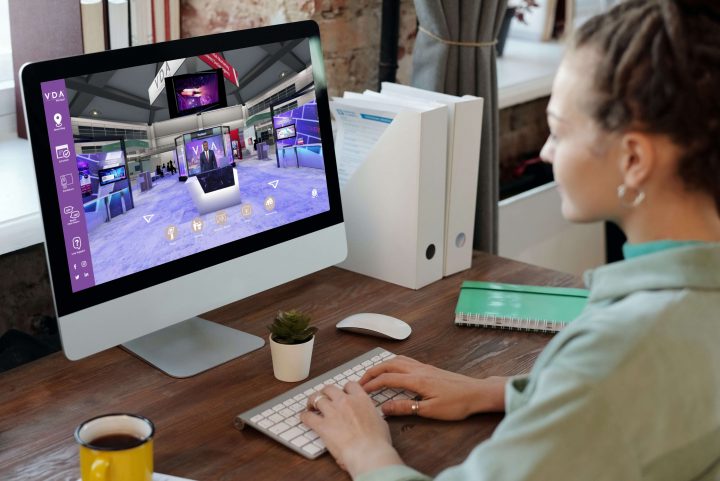
VDA Virtual is the first experience-forward event solution designed to help brands emerge in new meaningful ways through customized virtual and hybrid experiences.
For many, the word of the year in 2020 was “pivot.” What opportunities did VDA notice this past year and take action on?
Bob:
We were able to capitalize on the virtual event space and connect with a more geographically diverse client base throughout 2020. VDA has always worked nationally and internationally, however, accessing those far-reaching clients has always been more difficult for a one headquartered shop. Due to the rise of virtual events, we have been able to reach a more far-flung clientele, allowing us to do business with brands in Asia, Europe, and South America.
Heather:
Our company has always been efficient in taking on our clients’ demands and creating unique solutions. Adding virtual events to our reach has allowed us to do everything VDA is known for also in the digital world.
How did VDA adapt and get this 3D virtual solution-oriented service off the ground with such rapid speed?
Bob:
In short, we work like hell. In order to preserve the integrity of the company and our team, we recognized that we were going to have a new way to service our clients. Everybody at VDA really pulled together to work on different parts of VDA Virtual. For example, Apple, our Marketing Manager, also served as the UX Designer, while the tech team at the other end of the office was working on the back end. Every one of us went back to school, some of us took UX and coding courses, while others attended every virtual event webinar that they could find to learn more about virtual experiences and how to avoid certain pitfalls. We have been constantly on the lookout for more knowledge to engineer better products than those available at the moment.
Heather:
There was a fearless approach from the top-down: “We don’t see the pandemic going away, we need to come up with a solution for our clients, or else we won’t be able to service them, and will be out of a job.” Once everyone on the team saw our leadership’s dedication and willingness to take risks and fight, we all began learning everything we could to create a product that would meet the demands of the market. Interestingly, when you think about sales, you typically market and sell a product that was already developed. However, we took the opposite approach and decided to sell the cart before the horse by using VDA’s reputation and what our clients already know about us. Although at times we didn’t have a tangible product to show yet, we demonstrated our abilities to clients through empathy and insightful conversations. I think it was fearlessness, a lot of education, client loyalty and business referrals that have helped us to keep on pace.
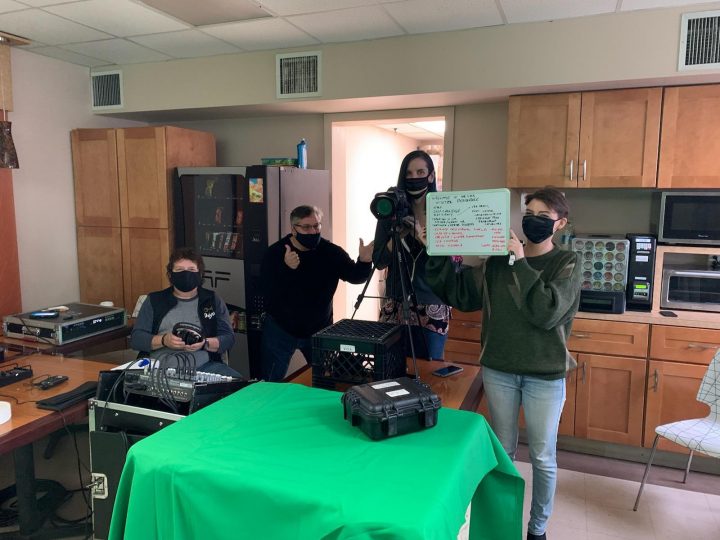
Could you provide us with one concrete example of a successful virtual/hybrid event you created for your clients?
Bob:
One of my favorite stories involves The Greater Boston Food Bank. We had traditionally created an annual live event called “Farm to Table” that would take place at a local farm where people would get together, eat, drink, network and contribute to the food bank. This event would give recognition and awareness to a local farm that supplies food for the food bank itself. As our client couldn’t host an in-person event this past year, we created an online virtual Farm to Table experience instead, in which we were able to include a lot more content and digital interactivity. The metrics that came back were incredible. We increased attendance by 250% and raised 2.8x more donations than in previous years. This of course was partly due to the pandemic and the rise of philanthropy, but I’m very proud to say that we contributed to making such an important event a success.
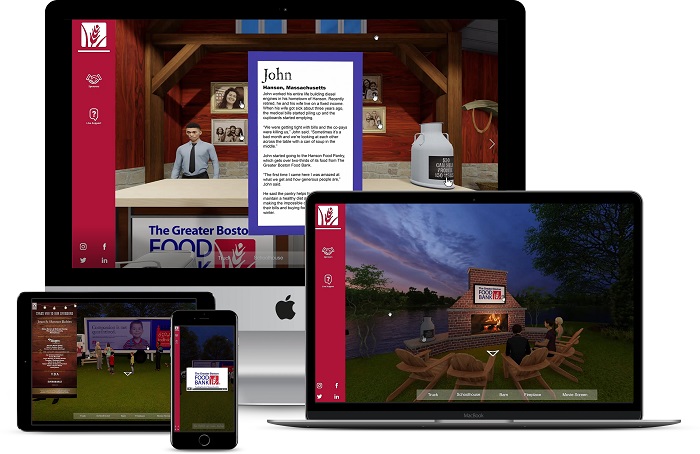
VDA increased attendance by 250% and helped raise 2.8x more donations for the Greater Boston Food Bank.
Heather:
A lot of my clients have opted for VDA Virtual for their online trade show presence. We create 3D navigable virtual exhibition spaces that are a digital extension of physical trade show booths. Some clients that have successfully deployed this model are Bayer and Zendesk, just to name a few. They expressed excitement over increased international attendance and higher conversion rate as a result of their event’s digital presence. We also provided our clients with analytics to give them a better understanding of what their visitors were interested in and which booth properties they were navigating through. Consequently, they were able to obtain valuable information about their leads and prospects that they had never been able to get before. Therefore, I believe that this virtual event component in some capacity is unlikely to go away anytime soon. Ultimately, all companies are looking for data and insights to grow their business, however, it is almost impossible to get tangible information about engagement and interactivity on a physical tradeshow floor.
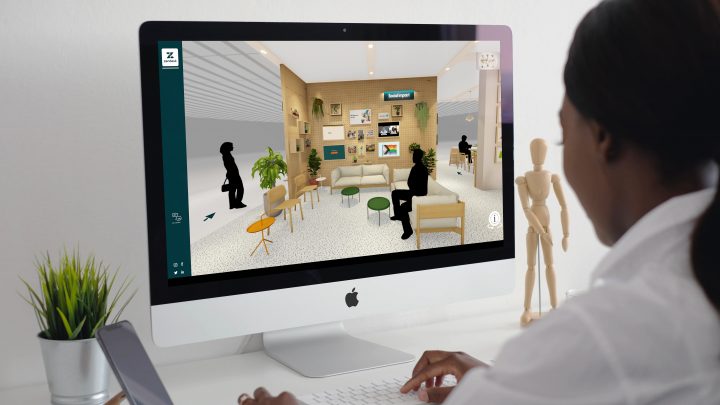
What would you say were your team’s biggest lessons learned this past year? Have these takeaways affected how you operate as a team today?
Bob:
One thing I used to constantly remind our team members was that a lot of our corporate clients were not full-time event planners or experts. Some of them work as a planner only during the times when the event comes around as they have other functions within the company throughout the rest of the year. I will sometimes need to point out to the team members that we are the event experts because we work with multiple clients all the time, and plan and execute events every day of the year. Our clients come to us because of the knowledge and the experience that we have so we shouldn’t be shy about suggesting when they are going down a bad path, or trying to steer them in the correct direction, because that’s our job.
We dropped everything to become experts in the virtual world through both online and offline education and utilizing everything we knew about physical events in the virtual environment. I believe the most important lesson in this situation is that we must continue to serve as the experts and advise our clients. As an example, I had a client who wanted six hours of continuous online content, and I had to remind him that he cannot expect people to remain in front of their computers for such a long time without losing their attention or interest. It’s not going to work and you need to rethink your content, how you present it, and the timeframe in which it’s presented.
How has last year affected the way we interact as a team today? We have worked well as a team before the pandemic because communication has always been key. Through COVID, we have all switched roles from physical to virtual and now we’re doing hybrid events as well, so all our employees wear multiple hats. We’re all trying to work and function as a broader team, with more of the team members operating in different roles. We work hard on internal communication every day to maintain efficiency in our processes, and we try to take that lesson and apply it to our clients too. Because if they fail to deliver the information, we can’t function effectively.
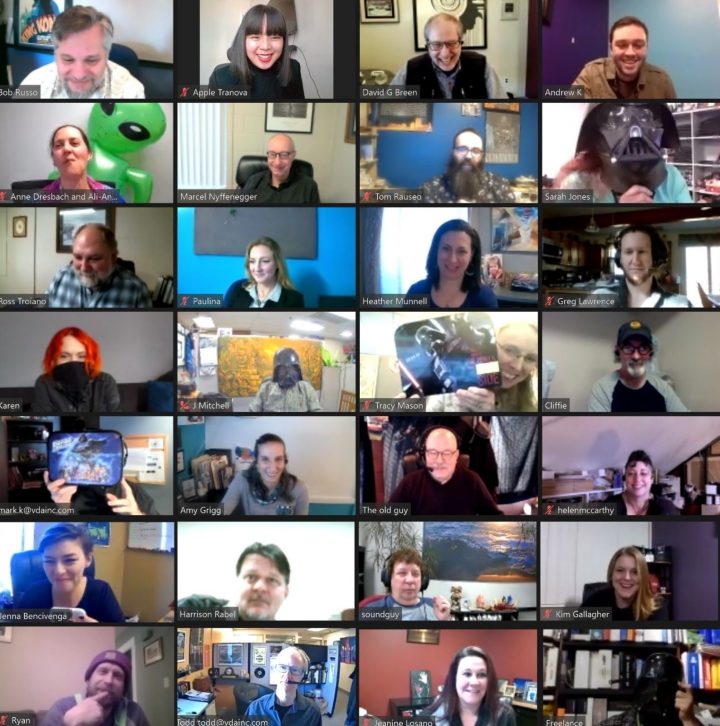
Heather:
The biggest lesson that I have learned from this experience is how to effectively communicate with my internal teams and clients. How we interact as social beings, build relationships, and communicate has changed a great deal. We shifted from in-person meetings at the office to Zoom calls from our living rooms, which has allowed us to socialize with our clients on more intimate and personal terms than we’ve ever done before.
Additionally, we’ve learned a lot about flexibility, organization, and resiliency since these skills play a role when people have crazy work schedules and off-the-clock life.
Thanks for taking the time to meet with BizBash, Bob, and Heather, and for sharing your business journey with our community.
